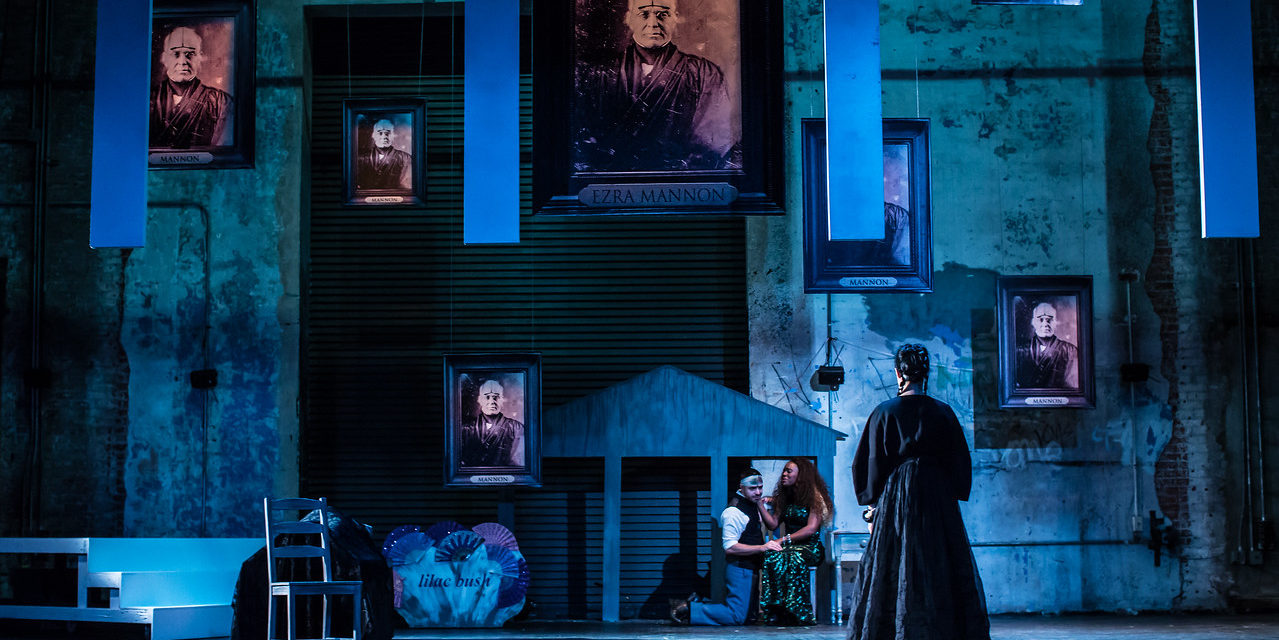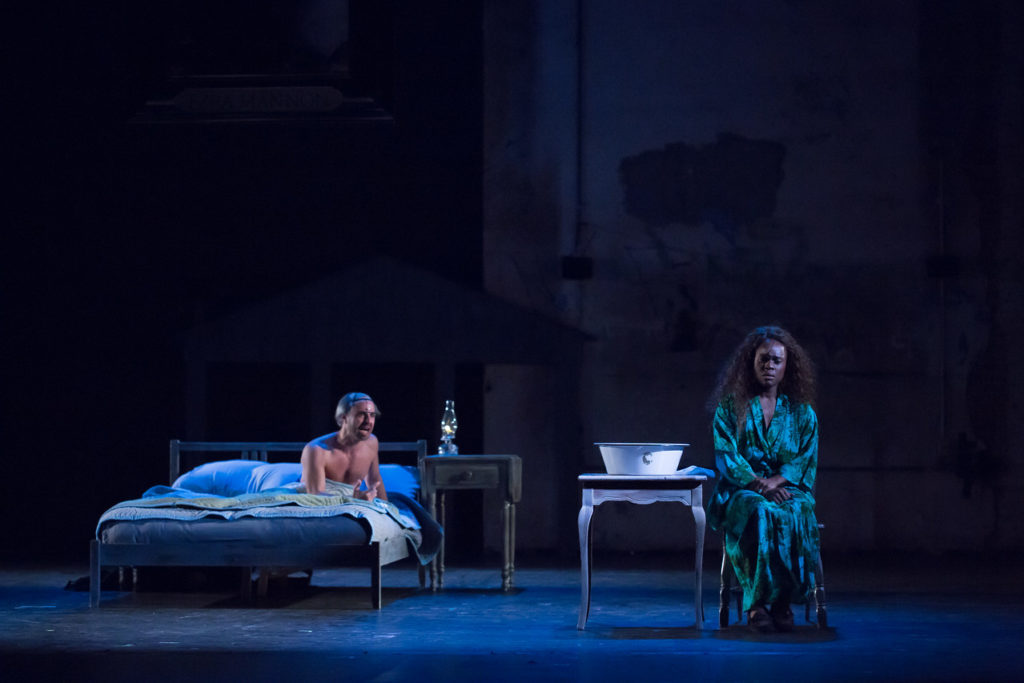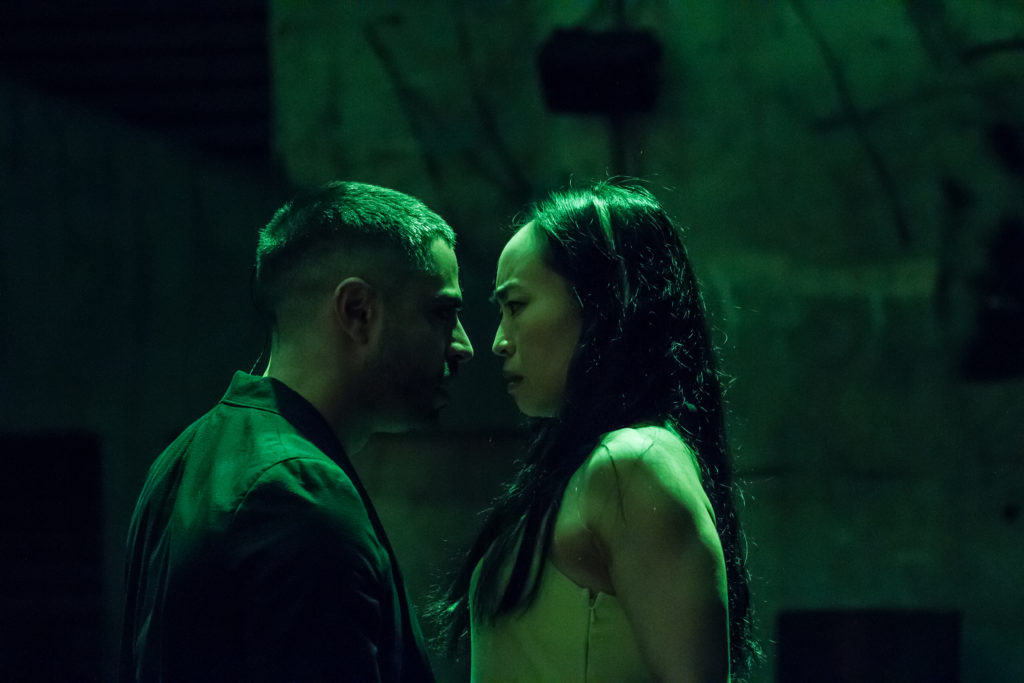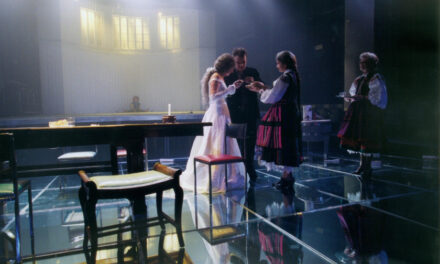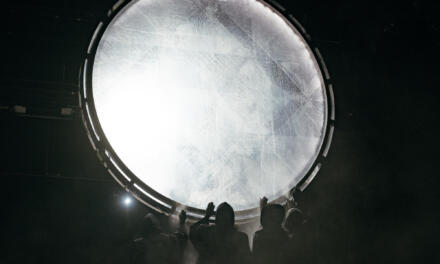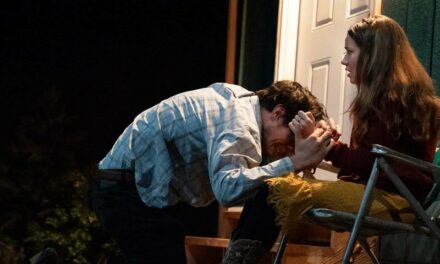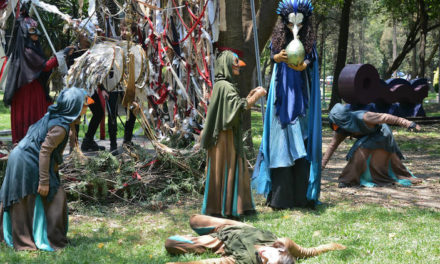Though regarded by many as the father of American drama, Eugene O’Neill correctly diagnosed himself when he wrote an authorial stand-in of sorts who, it is lamented in the play of this title, has only “a touch of the poet.” He is the beneficiary of certain intimations of the great and profound mysteries of life, but is at the same time cursed by powers of language too limited to adequately express all that he knows and feels. O’Neill’s plays are as a rule long, talky, and repetitive. He tends to put all of his ideas directly into the mouths of his characters, which makes for frequent incongruous and unlikely flashes of insight issuing from otherwise inarticulate and unreflective men and women whose working-class argot does not readily lend itself to high-flown philosophizing. Crude, excessive, and sentimental, as a writer he had much in common with his country, and it is probably safe to say that we will always cherish him for it.
Premiering in 1931, Mourning Becomes Electra is O’Neill’s rewriting of the Oresteia from an American and post-Freudian point of view. The House of Atreus becomes the House of Mannon, a prominent New England family with enough shameful secrets and fractious rivalries to stuff the five hours Target Margin Theater’s superb production at Abrons Arts Center runs. Like the Oresteia, O’Neill’s play is actually three plays—The Homecoming, The Hunted, and The Haunted—a trilogy that begins just before the end of the American Civil War in 1865, and ends about a year later with all of its principle characters either dead or spiritually eviscerated. As in O’Neill’s better-known Long Day’s Journey Into Night, and as in ancient Greek tragedy, the past is infinitely more powerful than the future. Abortive, incestuous desires exert a far greater pull than generative, nourishing ones. The death drive triumphs over the pleasure principle. As a story of a family (and a nation) struggling to heal its painful inner divisions, Mourning Becomes Electra is Schopenhauerian in its pessimism; life, the trilogy’s titular character and last Mannon standing concludes, is ultimately a punishment for being born.
Director David Herskovitz has taken this relentless and unwieldy text and transformed it into a rhapsodic, highly stylized production that makes virtues of O’Neill’s vices and allows the audience to experience his language from an enthralling variety of physical and psychological vantage points. We begin in the crowded lobby of the theater. The audience is waiting for the house to open, but before it does we are greeted by Mary Neufeld, the actress playing Seth Beckwith, a figure who will function as a kind of Chorus throughout the trilogy. She jumps up onto the concessions table and, by way of introduction, reads to us President Lincoln’s second inaugural address, the speech he delivered in the waning days of the war, and in which he implores the nation to move forward “with malice toward none, with charity for all.” As would prove true for the country during its difficult Reconstruction period, so in the Mannon saga: much malice and precious little charity are to follow.
We are permitted into the auditorium where we stand in the aisles for a brief opening rite. The first few lines of Homecoming are intoned by the performers spread out throughout the house and on stage. Then we are sent up to the balcony to watch the first part of the trilogy. Ezra Mannon, the patriarch whose grim portrait presides over the proceedings, is expected home from the war. His imminent arrival delights his daughter Lavinia, who is pathologically devoted to him but disquiets his wife Christine, who is disgusted by her husband. Christine has taken advantage of Ezra’s absence by taking up with Adam Brant, an unrecognized member of the Mannon family whose mother was a servant and whose appetite for revenge is robust after the lifetime of indignity he has suffered. Ezra, Adam, and later Orin Mannon, the son, are played by the same actor (Satya Bhabha), reinforcing the frequently displaced vectors of desire in this blighted family romance.
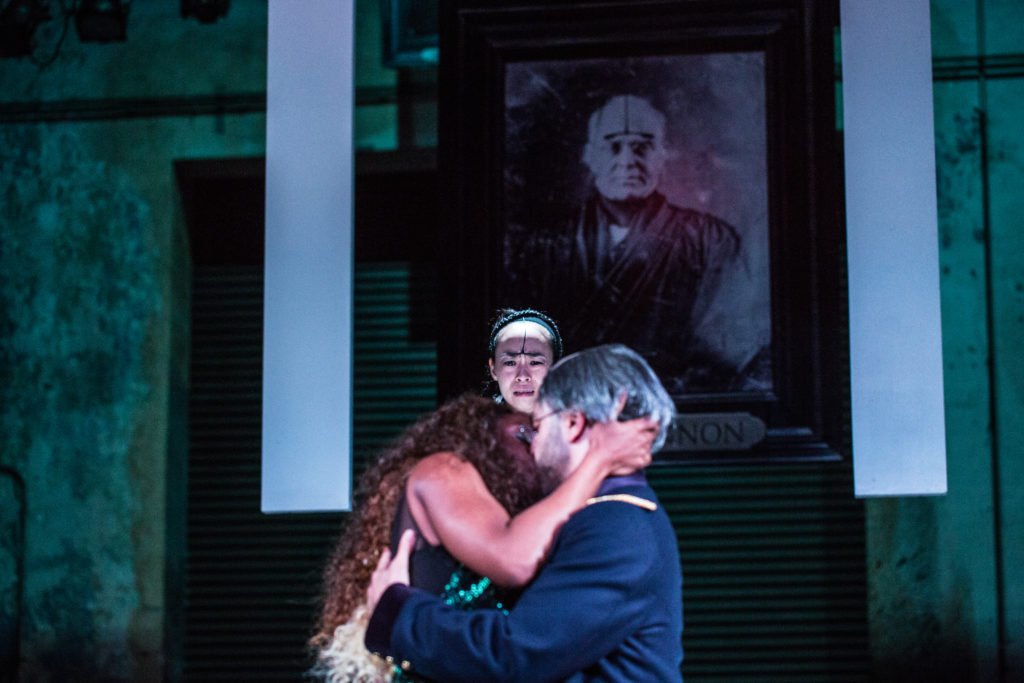
Photo: Kelly Stuart
In Homecoming it becomes clear that Herskovitz is not aiming for realism. Gestures are more symbolic than naturalistic. Characters do not always look at one another when the text indicates that they should. Nor do they consistently make any attempt to endow their speeches with the melodramatic fervor called for by lines like “It’s you who have stolen all love from me since the time I was born!” The attribution of dialogue is also a bit fluid. Sometimes a single performer will be tasked with carrying on an extended conversation with herself, playing several roles at a time. Neufeld is especially adept at this. Sometimes performers share dialogue or echo one another. Sometimes they slip into incomprehensibility, whispering or mouthing dialogue, or gesturing to indicate that a cut has been made and dialogue has been compressed. Herkovitz is also responsible for the rich and sophisticated sound design, and he navigates shifts in text and performance style by letting the music and other scoring guide the reverie.
Aided by her lover, Christine murders Ezra in their bed, thus setting in motion the chain of retribution that plays out in The Hunted, which we watch from downstairs, seated in the back of the auditorium as the performers utilize the stage and front of the house. Keeping the audience at a distance has the effect of elevating and abstracting the performers. The principle characters’ faces are mask-like, marked expressionistically with a black monobrow that O’Neill references in his copious stage directions.
We watch The Haunted seated up on the stage with the performers. Their proximity finally gives them flesh and blood, and Lavinia’s yearning to finally dispense with death and embrace life and love becomes palpably urgent. Behind the performers gapes the dim, empty auditorium, where the dead go to take their seats. In O’Neill’s version, however, Orin/Orestes is not spared. The Furies do not become the Eumenides. Athena never descends to tutor the miserable Mannons in the ways of reason, order, and justice. The only way to break the cycle of violence is for Lavinia/Electra to die childless and alone, kept company only by her awful secrets and the portraits of dead ancestors hung all around her. There is something evil in her blood.
The word “queer” is repeated rather incessantly in Mourning Becomes Electra, and while O’Neill almost certainly had its original meaning in mind, the term was used (derogatorily) to refer to the homosexually inclined as early as the late nineteenth century, and non-normative desire—extra-marital, intergenerational, incestuous—is, after all, that for which it appears the doomed Mannons must be punished. The family’s backward-looking love troubles the progressive flow of time and suggests that this house was always already divided. Herskovitz also foregrounds the trilogy’s unsettled attitude towards racial difference in casting Stephanie Weeks, who is black, as Christine, and then putting her onstage in a shimmering, form-fitting evening gown, towering stilettos, and a flamboyant, two-tone wig—a drag queen look. With the rest of the cast in vaguely Civil War-era garb, and with the phrase “That’s what we git fur freein’ ‘em!” repeated every time an unseen African-American servant causes trouble, Weeks’s body becomes highly conspicuous and highly charged. It is a strange and savvy contemporary intervention that calls attention to O’Neill’s blind spots and to the performative aspects of assimilation, of unity, and of hope.
Mourning Becomes Electra
By Eugene O’Neill
Directed by David Herskovitz
Abrons Arts Center
April 26-May 20, 2017
New York City
This post was written by the author in their personal capacity.The opinions expressed in this article are the author’s own and do not reflect the view of The Theatre Times, their staff or collaborators.
This post was written by Jessica Rizzo.
The views expressed here belong to the author and do not necessarily reflect our views and opinions.

